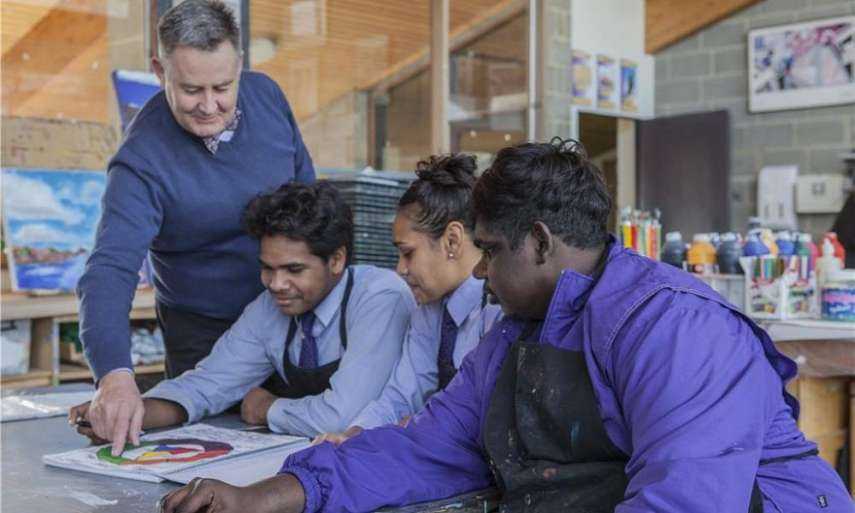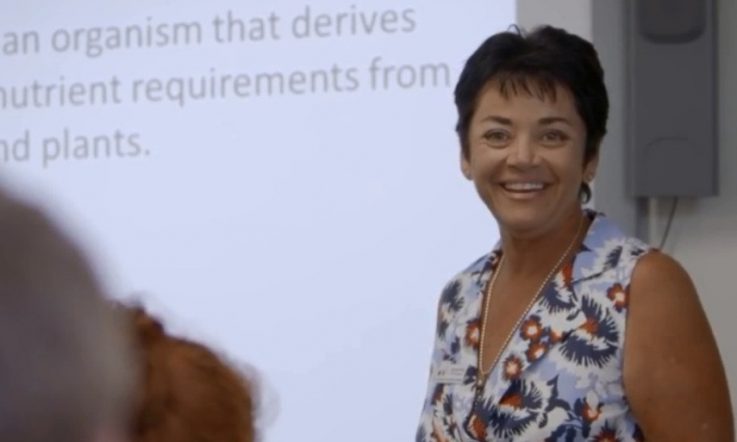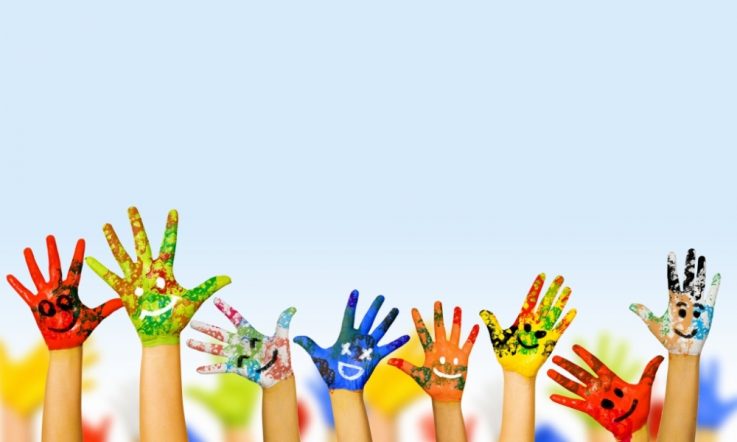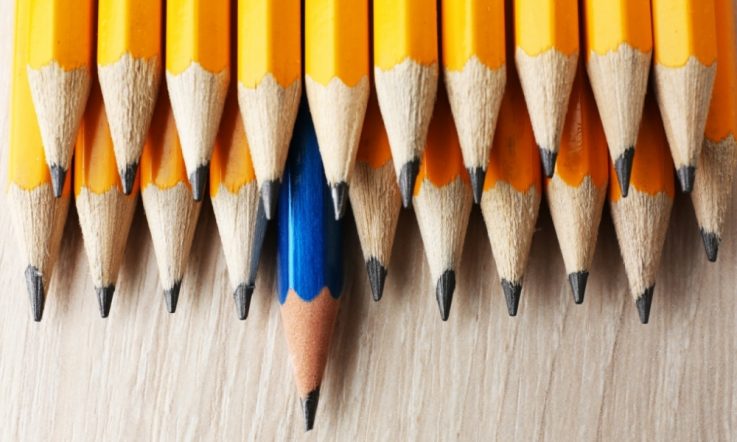There has been encouraging growth in the Indigenous student retention rate over the past decade, but it remains way behind the figure for non-Indigenous students.
Indigenous education researcher, Tony Dreise, says we’ve got to remember that many Indigenous young people across Australia go to school regularly, and one in two is now likely to go on to Year 12. He also cautions against stereotyping or stigmatising every Indigenous learner, but adds ‘the fact remains, however, that far too many are leaving school far too early’.
According to Australian Bureau of Statistics data (ABS, 2014), in 2013 the national apparent retention rate for Aboriginal and Torres Strait Islander students from Year 7/8 to Year 12 was 55.1 per cent. That figure was up from 39.1 per cent in 2003, but a worrying 27.8 percentage points behind the equivalent 2013 national rate for all other students.
Dreise is Principal Research Fellow in Indigenous Education at the Australian Council for Educational Research (ACER). ‘Whilst the growth in Indigenous student retention over the past decade is encouraging, the size of the disparity remains troubling,’ he tells Teacher.
Alternative pathways
Earlier this year, the Teacher article Alternative pathways highlighted a new ABS report that showed undertaking a vocational qualification is linked to increased Year 12 completion rates for male Indigenous students.
Data from 2006 and 2011 shows completion rates for male Aboriginal and Torres Strait Islander students was 43 per cent, but rose to 60 per cent for those students who did Vocational Education and Training (VET) in schools.
Dreise says, depending on your standpoint, there is ‘good and not so good news’ in terms of Indigenous pathways in and beyond secondary schooling.
‘The National VET Equity Advisory Council's National Report on Social Equity in VET 2013 reports that Indigenous participation in VET increased by 48 per cent between 2002 and 2011.
‘This data show that Indigenous Australians made up three per cent of all apprentices and trainees in 2011, slightly higher than the Indigenous share of the general population at 2.5 per cent.’
On the downside, he adds the increased rate doesn’t automatically lead to sustained employment – particularly in parts of Australia with thin labour markets.
Factors affecting Indigenous student retention
Returning to overall retention rates, Dreise suggests the reasons for the disparity are many, varied and complex.
‘Generally speaking, they involve both in-school and out of the school gate factors. In terms of in-school factors, the literature that I've read and field work that I've done over many years point to a range of issues.’
In-school factors include:
- attitudes among some parents and carers based on their own negative experiences of schooling;
- inequities in early childhood and primary school education outcomes which have failed to equip Indigenous young people with prerequisite knowledge and skills for high school;
- curriculum and pedagogy that fails to engage, excite or feel relevant;
- racial attitudes in school communities;
- no local senior secondary school for young people in remote areas;
- a sense of shame, self-doubt and, on occasion, fear of feeling 'dumb'.
Out-of-school factors include:
- family pressures including a lack of financial resources within the family unit;
- access to services, infrastructure and transportation;
- teenage pregnancy;
- community and peer level pressures such as alcohol, drugs and violence;
- high rates of incarceration and juvenile justice detention;
- health, nutrition, disability and mental health issues.
Effective pedagogy
So, what can educators at the grassroots level do to continue to drive improvement in Indigenous student retention? ‘Teachers and school leaders need to continue to build schools and community partnerships that foster and nurture the 'whole child',’ Dreise advocates.
‘This requires not only a focus on the student's continuous academic growth, but also by investigating what is happening in and around the child or young person.
‘A whole raft of questions might emerge: 'Is she learning on an empty stomach?'; 'Is his headspace being affected by bullying in the playground?'; 'How do I improve my teaching to this group of kids who don't speak Standard Australian English at home?'.’
In terms of effective pedagogy, he adds that the great teachers will be the ones who are innovative and mix it up. ‘Sure they'll have routines and some things will be predictable (because a lot of kids like this approach) but the high performing teachers won't rely on one pedagogical approach all day, every day.’
Dreise notes that they’ll think about where students are at in their learning and where they need to be. ‘They'll be learner-focused by systematically listening to and observing their students, creating and managing performance data, making learning interesting, providing safe and yet challenging learning environments.
‘The great teachers will be the ones that will help craft a 'learning disposition' within young people. They'll also foster a classroom environment whereby young people are made to feel proud of their heritage and positively dream about their rightful place in tomorrow's world.’
Indigenous contexts
Dreise is supportive of schools fostering cultures of ‘really high expectations’, but adds they also need to be mindful of having ‘highly real expectations’.
‘Indigenous contexts are often very complex spaces; so, resources and effort will need to be targeted and focused. Robust school planning is critical in this regard.
'Great schools are the ones that identify internal and external resources, be it money, talent, equipment or political influence. To this end, schools need to actively cultivate relationships with parents, community leaders, enterprises, health, recreation and community service agencies to build a culture that says “we're all obligated to serve and encourage our young”.
‘The great schools will be the ones who help unveil a galaxy of black stars for Indigenous young people; not just the football stars but the Indigenous stars who shine in trades, professions, business, arts, cultural and civic life. They'll embrace a sense of 'school at the heart of place' and seek to improve it each and every day.’
Making Indigenous youngsters feel like they have a stake and responsibility in a thriving school community, and not that they have to leave their culture at the gate, the researcher concludes, is equally as important.
Next month, Teacher will explore how a US program supporting Indigenous students in Arizona could offer inspiration to schools here in Australia.
References
Australian Bureau of Statistics (2014). 4221.0 – Schools, Australia, 2013. Retrieved from: http://www.abs.gov.au
Australian Bureau of Statistics (2014). 4260.0 - Outcomes from Vocational Education and Training in Schools, experimental estimates, Australia, 2006-2011. Retrieved from: http://www.abs.gov.au
Rothman, S., Shah, C., Underwood, C., McMillan, C., Brown, J., & McKenzie, P. (2013). National report on social equity in VET 2013. National VET Equity Advisory Council, Melbourne.
Tony Dreise presented on this topic at the ACER Research Conference 2014. Visit http://rd.acer.edu.au/article/learning-earning-and-yearning for more information.



